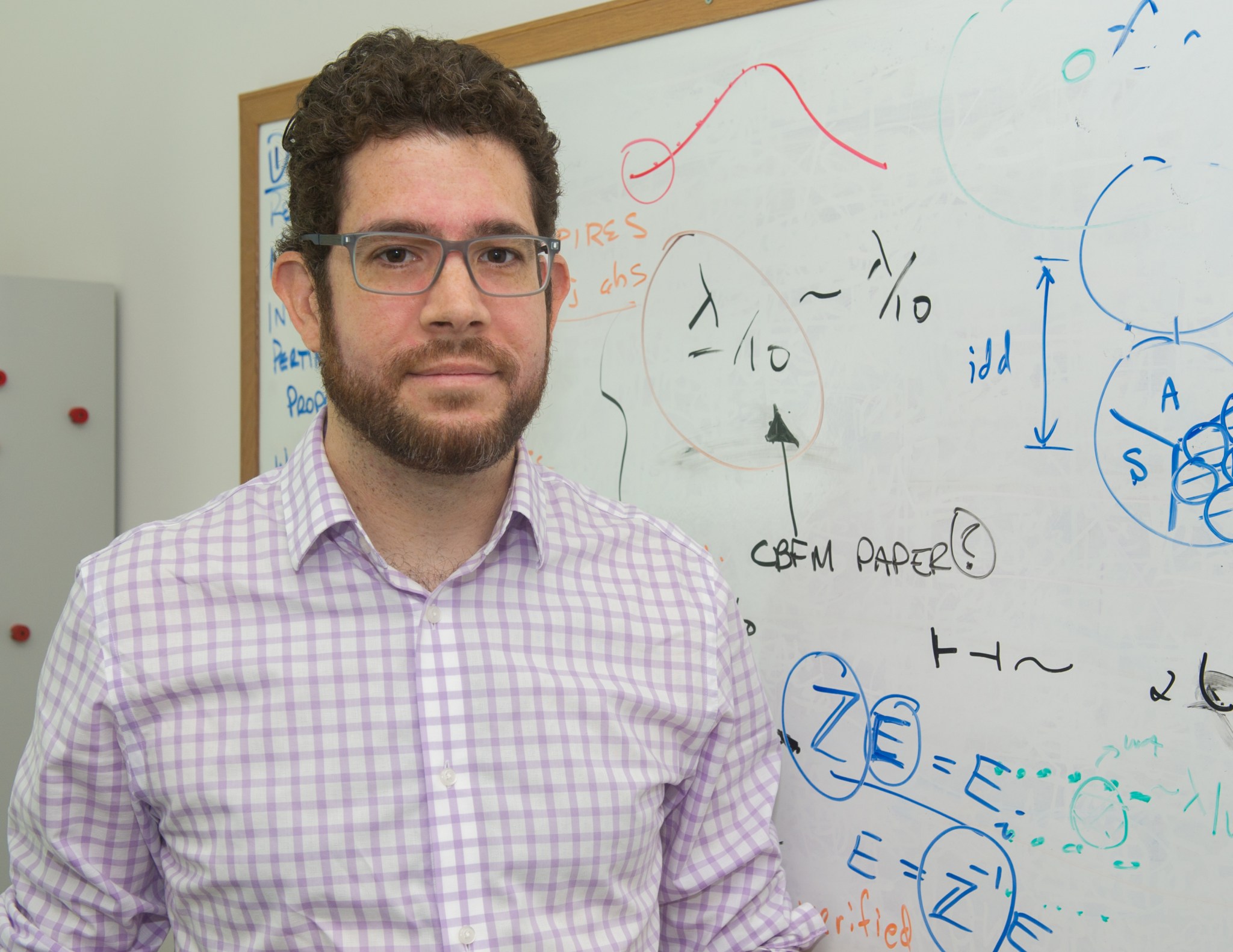Name: Ian S. Adams
Formal Job Classification: Research physical scientist
Organization: Code 612, Mesoscale Atmospheric Processes Laboratory,
Earth Science Division, Science and Exploration Directorate
What do you do and what is most interesting about your role here at Goddard? How do you help support Goddard’s mission?
I work in the Mesoscale Atmospheric Processes Lab. Mesoscale means “medium scale.” We look at clouds and precipitation and the processes involved with them, including atmospheric dynamics. We also work on the sensors, such as radar, that take these measurements from spacecraft and aircraft.
What is your educational background?
I have a bachelor’s, master’s and Ph.D. in electrical engineering from the University of Central Florida in Orlando.
Why did you become an engineer?
I wanted to be an inventor since I was 8 years old. I liked building things, I played with Legos a lot. I liked taking things apart to see how they work and then putting them back together successfully. I was interested in science experiments. In middle school, I did a science experiment to document the effects of filtered ultraviolet versus natural light on growing plants.
In high school I became interested in electrical engineering. As an undergraduate, I almost switched to physics. While pursuing my doctorate, I followed the scientific, not technical, side of engineering. That is how I got into remote sensing, which is what I do here. I use technology to do science.
Have you invented anything?
I do not have any patents, but I work with the scientists and engineers to develop new technologies and methods for observing clouds and precipitation. We work together to create ground-breaking science and engineering. We are all inventors.
Where did you work prior to coming to Goddard?
I finished my doctorate while working at the Naval Research Lab in Washington, D.C., for 12 years. I worked on WindSat, a satellite mission to measure surface winds over the ocean. My work looked at how rain impacted the surface wind measurements using computer modeling to simulate sensor observations.
How did you come to Goddard?
At NRL, I become more involved in precipitation and clouds and began working with some Goddard scientists. In February 2017, I joined my current group at Goddard as an instrument scientist. I am working more on developing new sensors. I was hired because I can translate between scientists and engineers.
What field work have you done?
I did one field campaign and spent about a week in Warner Robbins, Georgia. We were in an airplane hangar monitoring NASA’s ER-2 aircraft, which has some of our sensors. We were validating the sensors on the NOAA weather satellite using the ER-2 aircraft sensors. While there, we had to take one of the sensors apart because of some anomalies, and we fixed the sensor’s issues.
My dad was an airline mechanic and later ran an aircraft maintenance shop. I grew up in airplane hangars and maintenance shops. It felt very normal to me to be in that environment. I really enjoyed it. My father thought it was cool too.
Have you changed the balance between being an engineer and being a scientist?
I’m less worried about patents and more concerned with doing good science as part of a team and writing papers. I guess I’ve moved more towards being a scientist than an engineer.
As someone who hasn’t been at Goddard for very long, is there something that you think makes Goddard special?
Yes, I’m still amazed at how much everyone enjoys working here. The level of enthusiasm and engagement is contagious.
What lessons would you pass along to somebody just starting their career at Goddard?
In some ways, it was easy for me to come here. I had 10 years of working as a government scientist and I knew the people in my new lab. For new people, I recommend taking advantage of all the many opportunities to meet our scientists. We have colloquia and other educational events plus all sorts of other activities to bring people together.
Is there something surprising about your hobbies outside of work that people do not generally know?
I DJ. When I was in college, I played in martini bars and lounges in Orlando, and I played a little bit when I first moved up here. Then I became more involved with my work and married and had a family. So now I mainly DJ around the house for my family and friends.
What is your “six-word memoir”? A six-word memoir describes something in just six words.
I don’t know where to start.
By Elizabeth M. Jarrell
NASA Goddard Space Flight Center



























